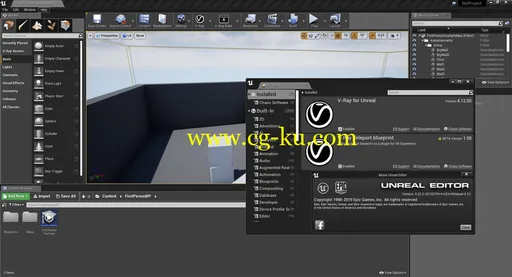File Size: 473 MBAs one of the world’s most popular physically-based renderers, V-Ray is used daily by top design studios, architectural firms, advertising agencies, and visual effects companies around the globe.
Chaos Group also noticed the rapid adoption of Unreal Engine by many of these firms to create interactive or immersive experiences, so for them to produce V-Ray for Unreal was a logical step.
V-Ray for Unreal is the fastest, simplest way to bring V-Ray scenes directly into the Unreal Editor.
And it allows you to render ray traced, photorealistic images using V-Ray directly in Unreal.
True photorealistic rendering directly from UnrealWhen you render with V-Ray for Unreal, you get the exact same photorealistic quality that V-Ray is known for.
V-Ray taps into the full combined power of your GPUs and CPUs for ultrafast ray tracing.
Use the content creation workflow you already knowCreate your scene the same way you normally do using V-Ray and your favorite 3D application (3ds Max, Maya and SketchUp).
Then, export your V-Ray scene from the host application and import it using V-Ray for Unreal.
Smart translation of materials and lightsWhen you import your scene, V-Ray for Unreal automatically converts your materials and lights into real-time equivalents for UE workflows.
At the same time, your original materials remain connected to their real-time versions and are called up when you’re ready to render.
Your gateway to virtual realityOnce your V-Ray scene is imported, you’ll be ready to take full advantage of the VR capabilities in the Unreal Editor.
V-Ray for Unreal makes it fast and easy to create high quality, immersive VR.
System Requirements:OS:Windows® 7 SP1 / Windows® 8/8.1 Windows 10 (x64)Memory:8 GB RAM and 8 GB swap minimumCPU:Intel® or AMD® 64-bit processor with SSE 4.2 support

